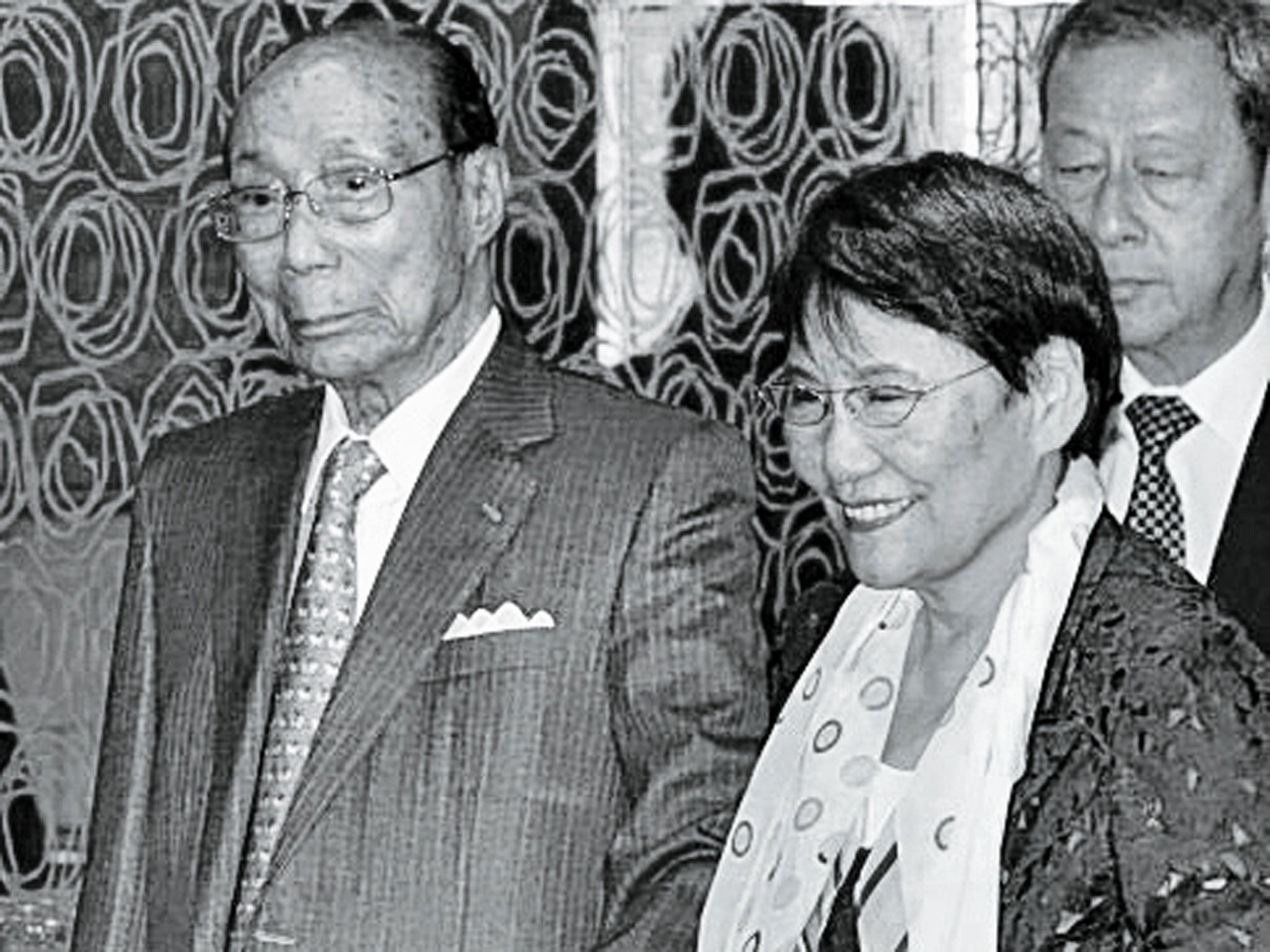Sir Run Run Shaw: Film mogul whose studio kick-started the kung fu genre and inspired the likes of Quentin Tarantino

Run Run Shaw built a Hong Kong film and television empire that nurtured rising talents, inspired Hollywood film-makers such as Quentin Tarantino and produced the 1982 sci-fi classic, Blade Runner. Shaw Brothers Studios, once among the world's largest, turned out nearly 1,000 films and gave young directors like John Woo their start. In 1967 he founded Television Broadcasts Limited, which remains a dominant force in Hong Kong; it was where stars like Chow Yun-fat got their first breaks. Wong Kar-wai, the director behind critically acclaimed arthouse films like Chungking Express and In the Mood for Love, got his start on a TVB training course and worked at the station briefly as a production assistant. Shaw led TVB until retiring as chairman in 2011.
Shaw (pronounced "Shao" in Mandarin), was born near Shanghai to a wealthy textile merchant, the sixth of seven children. His elder brother Runme Shaw set up a silent film studio while another, Runje, went to Singapore in 1923 to market films to South-east Asia's Chinese community, eventually opening 139 cinemas across the region.
After the Second World War the company faced competition from rivals in Hong Kong and Singapore, so Shaw moved to Hong Kong in the late 1950s to modernise the company. He shifted the focus from exhibiting films to producing them and renamed the company Shaw Brothers. His path to dominance began in earnest in 1961 when he opened Movie Town, a vast state-of-the-art studio in Hong Kong's rural Clearwater Bay, bought with a lopan from the British government. With 1,500 staff working on 10 sound stages it was reputed to be the most productive studio in the world. At its busiest it made 40 films a year, most featuring kung fu, sword fighting or triads.
The result was a library of nearly 1,000 films such as The One Armed Swordsman and The Five Fingers of Death. The studio's logo, the initials "SB" on a shield, was inspired by the Warner Brothers emblem, in a nod to its Hollywood aspirations. It came full circle when Tarantino appropriated the ogo for his two Kill Bill films, which paid homage to the studio and other Hong Kong martial arts films. To prepare, Tarantino recalled, "For a year, I'd watch one old Shaw Brothers movie a day – if not three."
Films were produced with assembly-line methods; stars and technical staff alike lived on site. Budgets were low and production schedules were between 35 days to three months. The producer acknowledged that quality was not his foremost concern: "We're here to make money." Even Shaw protégé Raymond Chow complained about the B-movie quality of the films when he was hired to work in the publicity department. "I told Sir Run Run to forget it," he recalled. "I said I did not think I could keep my job because the pictures were so bad." His comments earned him promotion to the production department.
While Shaw didn't create the kung fu genre, he was quick to capitalise on its trendiness and used a modernised studio system and centralised production techniques to pump out films quickly. In their heyday Shaw films were reportedly seen by 1.5 million people a week, many in the cinemas owned by the brothers.
He failed, however, to spot the potential of an up-and-coming Bruce Lee, who had returned to Hong Kong after a stint in Hollywood. Lee wanted a bigger salary and creative control but Shaw wouldn't budge from the standard contract given to all his actors. Lee signed with rival upstart Golden Harvest, founded by Chow to get away from his former boss's factory-like system. Other up-and-coming stars like Jackie Chan also spurned Shaw's methods. Audiences eventually moved on to grittier, more realistic or contemporary action fare, though Shaw films still have a solid cult following globally. The Shaw film library was sold in 2000 to Celestial Pictures, which has been restoring and re-releasing them digitally.
Film production ceased in 1983; by then Shaw had switched his focus to television. In 1973 he took control of TVB, still Hong Kong's dominant station. It was the launching pad for the careers of talents like Chow Yun-fat, Wong Kar-wai, heart throb Andy Lau and comedian Stephen Chow. Its Chinese programmes are seen by 300m households around the world.
Shaw, knighted in 1974, was also a philanthropist. In 2002 he founded the annual Shaw Prizes, which offer U$1m to winners in mathematics, medicine and astronomy. He rarely gave interviews, even about his philanthropy. A journalist for the South China Morning Post recounted mentioning during a 1984 interview that a team fighting leprosy in China had trouble traversing the mountainous terrain. Shaw donated off-road vehicles but demanded that there be no publicity.
Shaw married Mona Fong, a former singer, in Las Vegas in 1997, about 10 years after his wife, Lily, died. He had hired the former singer as a procurement manager in 1969. By 1999, she was managing director and deputy chairman of Shaw Brothers.
Run Run Shaw, media mogul: born Ningbo, Zhejiang, China 14 October 1907; married 1932 Lily Wong Mee Chun (deceased; two sons, two daughters), 1997 Lee Mong-lan (Mona Fong); died Hong Kong 7 January 2014.
Subscribe to Independent Premium to bookmark this article
Want to bookmark your favourite articles and stories to read or reference later? Start your Independent Premium subscription today.

Join our commenting forum
Join thought-provoking conversations, follow other Independent readers and see their replies